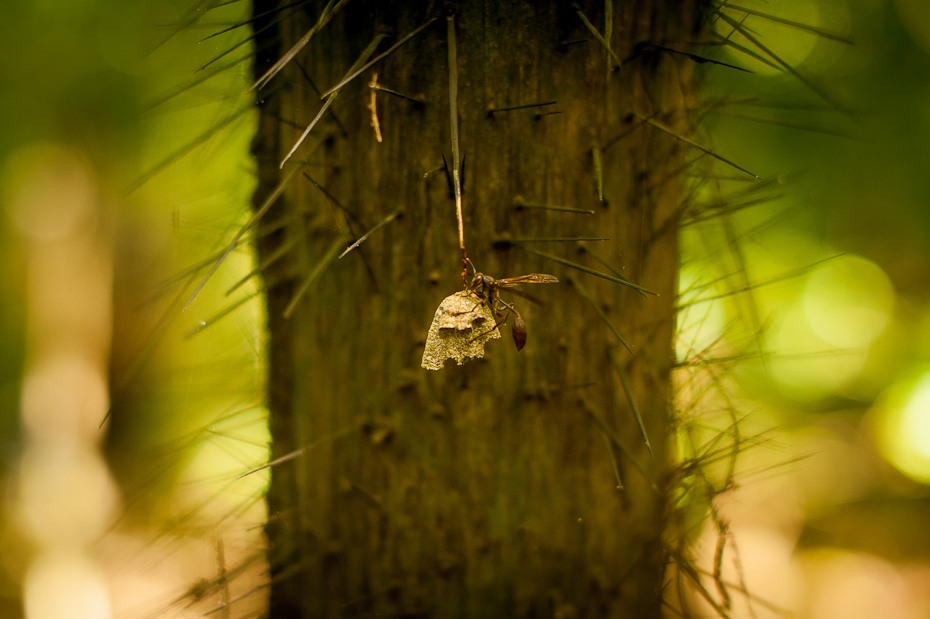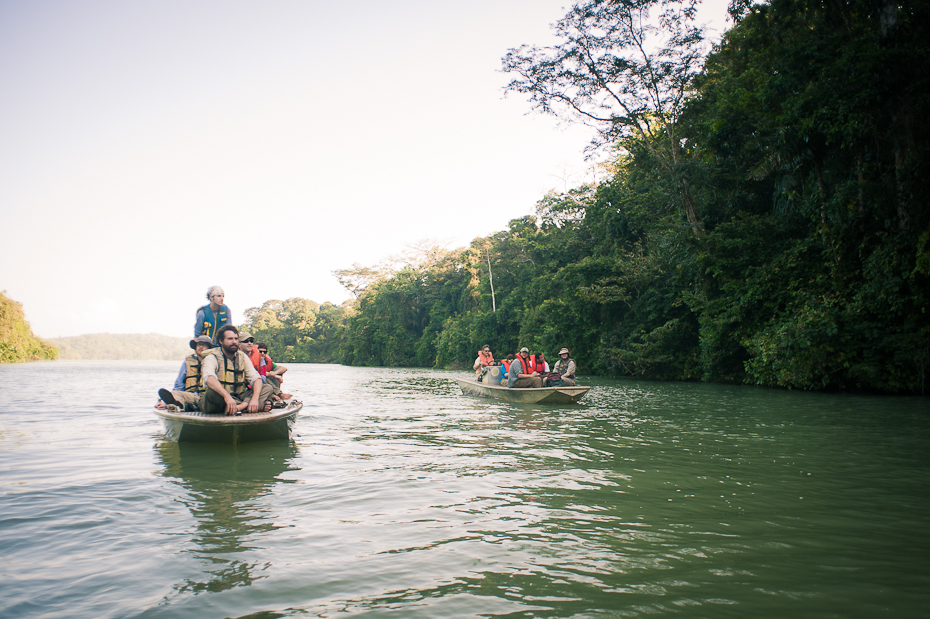Little side note before I start. It turns out that for the tropical ecology course I'm taking right now, I need to blog about my experiences here in Panama. Therefore as you're reading this, so are my professors. Probably drinking. And yes I'm graded on this. Our course started off with a bang. Within the first hour of the first day, we were on the Panama Canal, setting off on a water taxi ride to Barro Colorado Island, the famous biologist dream playground. Although I'd been here 2 years ago, it felt like seeing Panama for the first time. As any biologist would, I was enjoying the magnificent frigatebirds (Fregata magnificens) elegantly soaring over our heads, an experience much more enjoyable than trying to dodge the pigeons of Montreal whose life goal is to shit on you. In the distance the forest displayed fifty shades of green with its numerous trees peaking through the canopy, all competing for access to light. A sunset behind us was included in the package. And while I was appreciating the wonders of nature I also witnessed one of the biggest triumphs of human ingenuity as we went past the giant dredging goliaths expanding the canal. The lush forests surrounding it should be an important reminder of the biodiversity we may lose due to our relentless expansion and development.
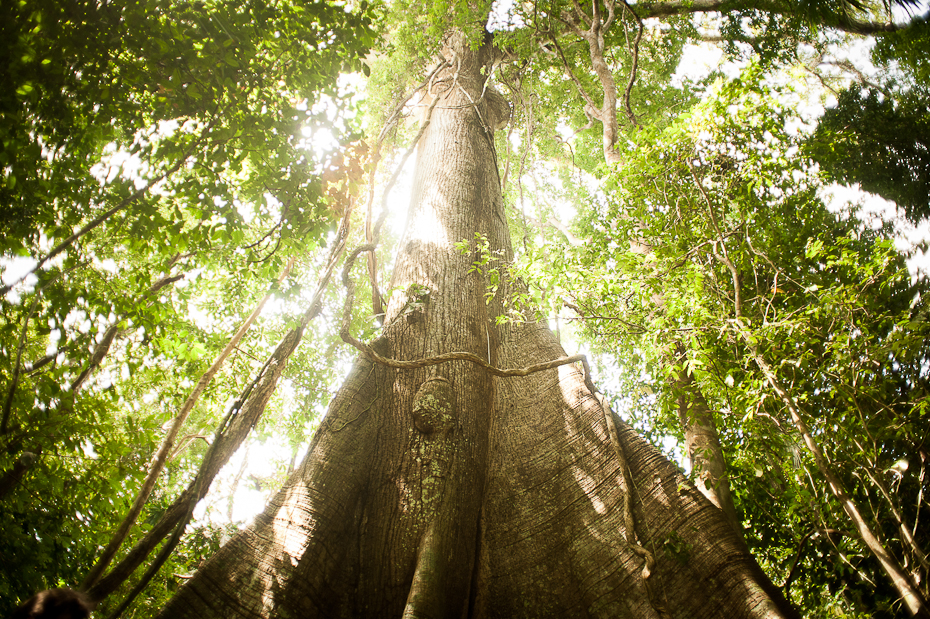
300 years old and counting whoops, the tree fell recently. Nikon D700 + 20mm f/2.8, 1/400, f/2.8, ISO 1600.
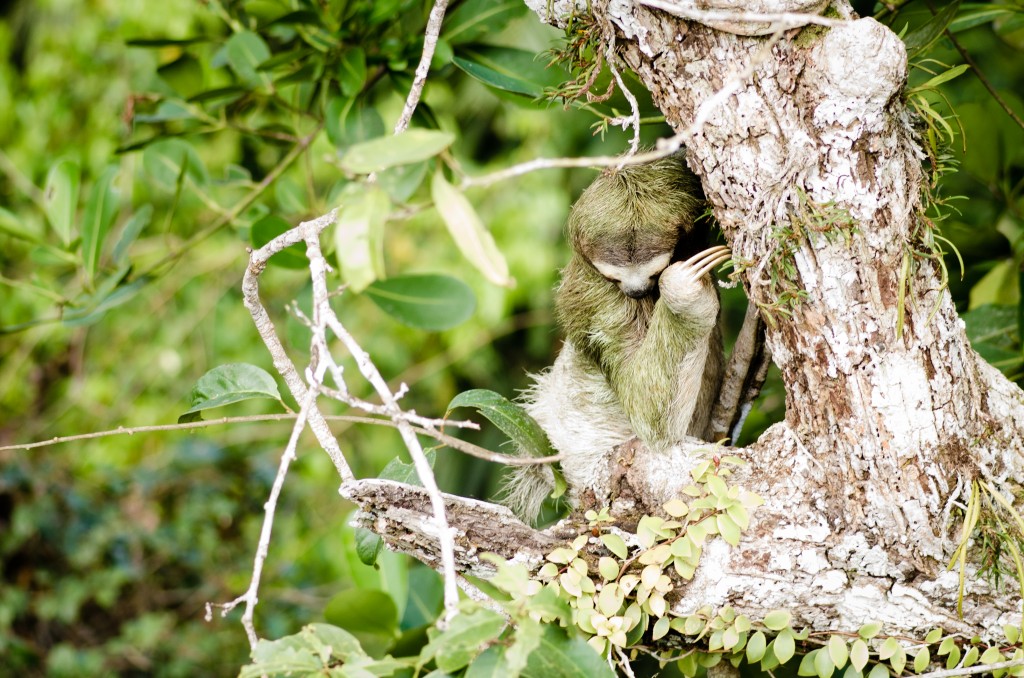
3-toed sloth. Nikon D7000 + 105mm f/2.8, 1/160, f/3.5, ISO 400.
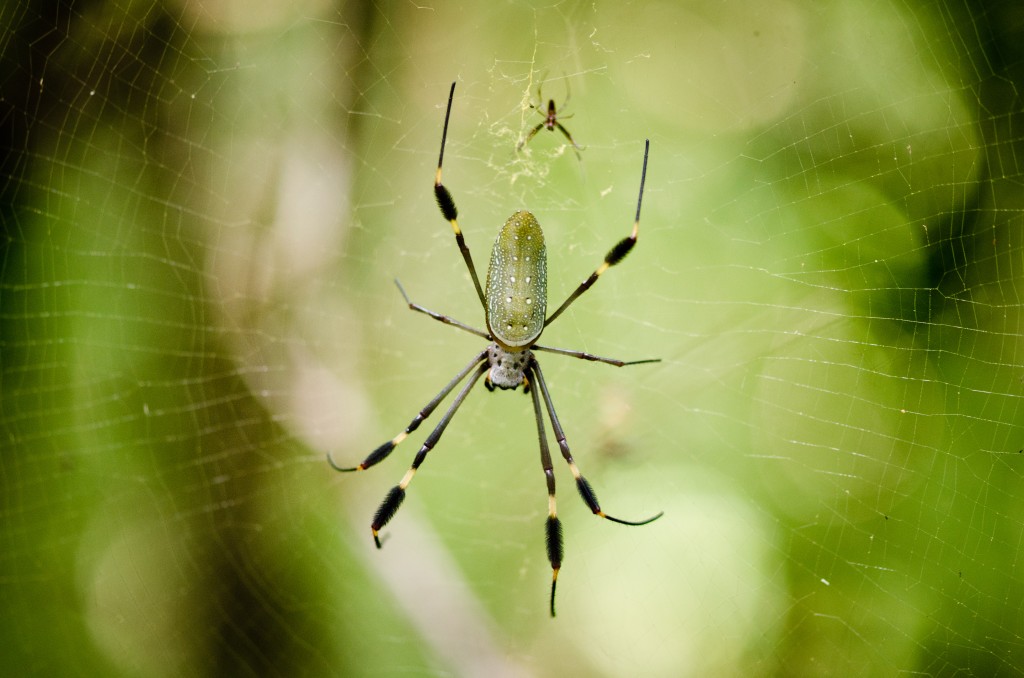
Nephila clavipes female in front, male in the back. Nikon D7000 + 105mm f/2.8, 1/125, f/3.2, ISO 640.
During the construction of the canal, the artificial Gatún Lake was formed. As the waters rose, they submerged the then-present rainforests, and the hilltop remained uncovered, becoming Barro Colorado Island. Now, managed by the Smithsonian Tropical Research Institute, with its essential facilities (labs, dormitories, dining hall and lecture hall) and its stunning biodiversity (without even mentioning animals, the island has a diverse forest holding as many plant species as all northern temperate forests combined), the island appropriately is visited by hundreds of scientists from across the world every year.
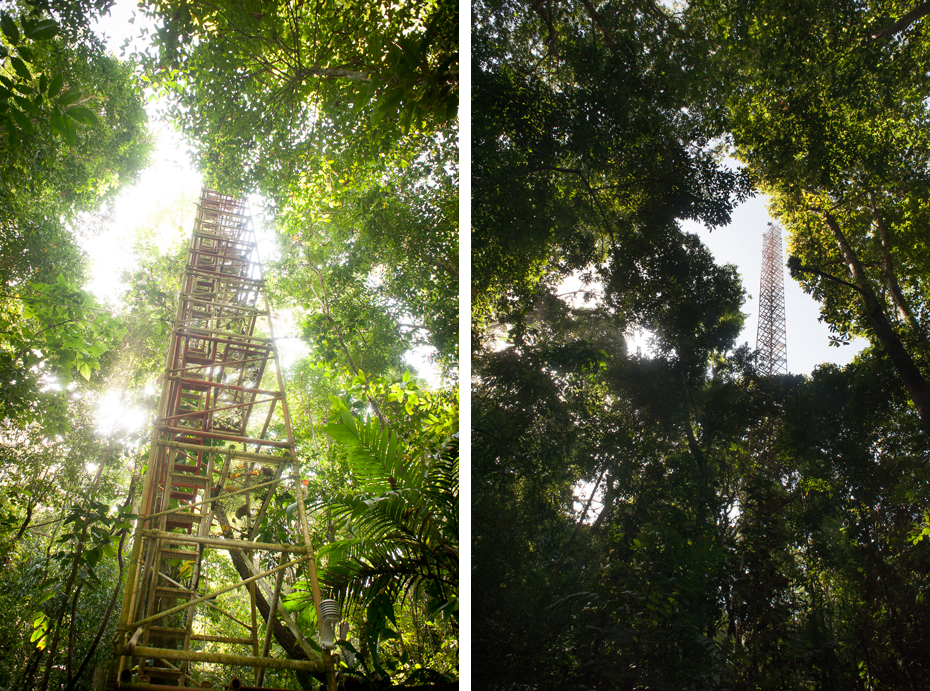
We climbed this rusty wobbly canopy tower. Nikon D700 + 20mm f/2.8, 1/50, f/5.0, ISO 800 & 1/125, f/22, ISO 800.
As we landed on the island, I immediately tucked my pants in my socks. I know it exponentially increases how dorky I look but I remembered Dana two years ago coming out of the island with 50ish ticks on her body. She didn't recommend it. So tucked pants it is. We set out for our forest hike. Through the mosaic of twisting lianas, strangler figs suffocating their victims and palms threatening you with their menacing sharp spines, we caught glimpses of trogons, ñeques, poison-dart frogs, tinamous and anoles. Biologist heaven.
Awesome crypsis. Can you spot the praying mantis? Nikon D700 + 50mm f/1.4, 1/125, f/2.2, ISO 800.
Wasp doing waspy things. Nikon D700 + 50mm f/1.4, 1/125, f/2.2, ISO 800.
Here we were on our way to our final lecture on Barro Colorado Island. We told our professors we were bored of the lecture hall. They gave us this. Nikon D700 + 20mm f/2.8, 1/400, f/2.8, ISO 200.
Most peaceful classroom you'll ever find. For PFSSers no that is not Russell. Nikon D700 + 20mm f/2.8, 1/400, f/2.8, ISO 200.
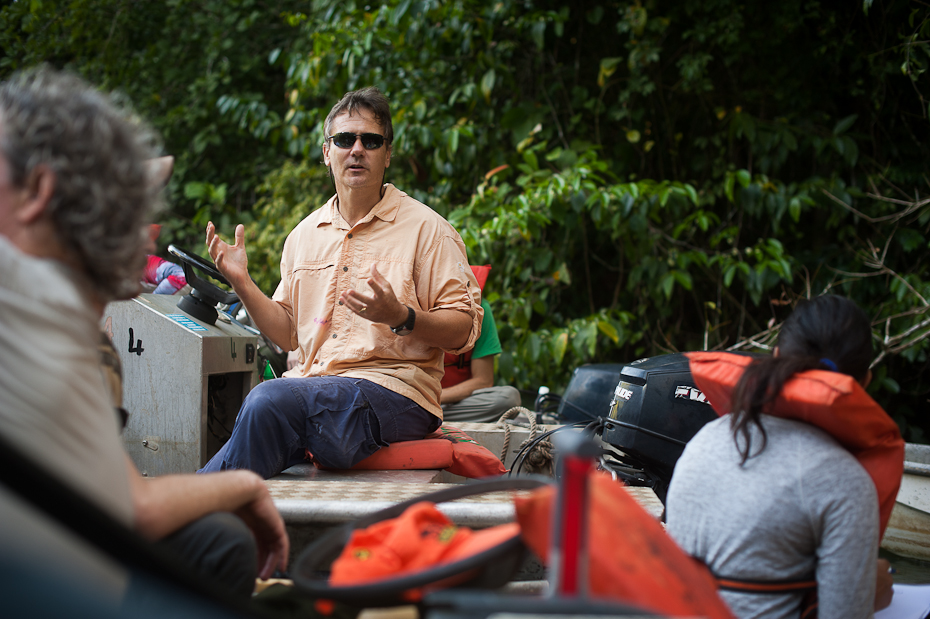
Butterfly expert Owen McMillan giving us a lecture on evolutionary biology. Nikon D700 + 20mm f/2.8, 1/160, f/2.5, ISO 200.
I could talk more in detail about what we did and learned but both the hammock and our unlimited cases of cold beer are inviting me over on the balcony overlooking the canal.



